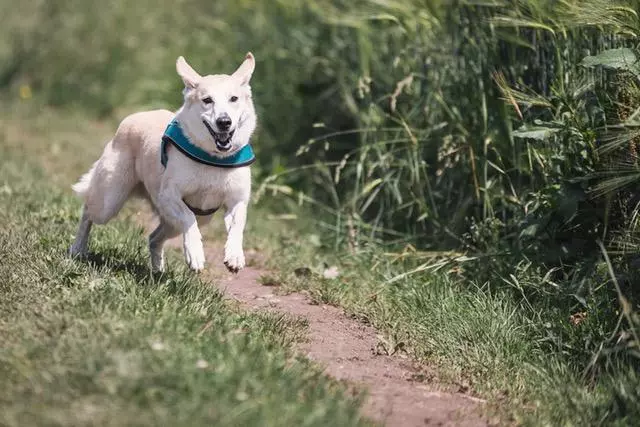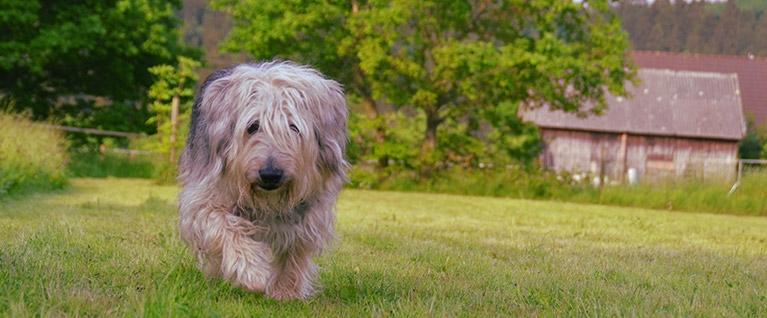Tips for deterring interactions with loose dogs
“I was walking with my 2 young children and a dog started running towards us. It began jumping on my 3-year old, and would not stop despite me trying to keep him down. My 3year old was screaming. I was screaming for help, and no one came. My son received scratches all over his trunk, neck, face, and ear. I feel horrible for not being able to protect my babies.”
Unfortunately, since the beginning of Spring, I have received numerous emails and read too many Facebook posts describing scenarios similar to the one told above. I’m saddened that families end up traumatized just because they ventured out their front door to enjoy nature. The main solution is obvious and simple. Dog owners need to be responsible and keep their pups on a leash when outside their homes – unless, they are enclosed in a posted off-leash area. Yes, even the world’s most friendly pooch should be secure on a leash with an experienced pet parent.
However, we also have to be realistic and consider that mistakes happen. Gates accidentally get left unlatched. Doors get opened. Dogs slip out of leads. Strays do exist. Even if every owner leashed their dogs and trained them with a stellar recall (a come to return to them immediately), anyone can encounter a loose dog. Empower your family to have safer strolls by knowing and practicing these 3 tips when confronted by a friendly or fearsome Fido on the loose.
1. Stop! Be Still and Silent. Stopping and firmly standing still while quiet, without making eye contact, can cause a dog to quickly lose interest. Dogs can’t chase things that aren’t moving. Screaming, running, staring, etc. excites most dogs and provokes others. Even friendly, overzealous dogs that greet with exuberant jumping and accidental scratching are likely to stop when their efforts are being ignored. If a nervous dog approaches while everyone is still and silent, then chances are they will take a few sniffs and go away. Whether you use the popular slogan “Be a Tree” or make up your own family phrase, silent and still is the best thing your children can do with an approaching or unfamiliar dog.
*PRACTICE THIS AT HOME AND WITH FAMILIAR DOGS! Role play with your young children and a big stuffed dog you bring to life. Even toddlers can do this when they’ve been taught and practice at home.

2. Try Cues and Treats. Many dogs have experienced some form of training and may respond if firmly told to “sit” or “go home”. You can stand between the dog and your children and tell the dog to “go home” in an authoritative tone. If it continues approaching or doesn’t respond, then try tossing treats (or your kids snacks if that’s all you have) away from your family. You want to toss the goodies where the dog can find them and be distracted by gobbling them up. This technique can buy you some time until the owner appears and retrieves their dog, or the pup finds something else that piques his interest.
3. Carry a Deterrent. Obviously, this is not for children, but it is something that can certainly help a parent feel more prepared for an unpredictable dog encounter. There are several things you can consider carrying to inhibit unwanted dog interactions with a dog on the loose. Postal workers and dog walkers are usually equipped with these items and confidently use them to ward off aggressing dogs. An air horn can be extremely startling and painful for a dog’s sensitive ears causing it to freeze or flee at the sound. Spray shield (often referred to as Direct Stop) is a cylinder canister that disperses a citronella based spray at the push of a button. This spray purports to not be harmful to dogs. Yet, it sprays quickly and discourages the pursuit of mildly aggressive animals. Pepper spray is another type of deterrent, but dogs are likely to respond with heightened aggression when pain from the spray is inflicted. Pepper spray can also drift or shift with the wind and affect you and your family. If you choose to use this type of deterrent, then foam or gel is a better option. These deterrents should only be used as a last resort.

Just a few weeks ago I was delighted to hear a client’s success story. Her children encountered a big, strong, charging neighborhood dog, and they knew exactly what to do! The dog had a history of being off leash and rushing little kids. Despite parental pleas, the owner took no actions to keep the dog restrained. The Mom was fed up with her children being terrified to play outside. She shared this frustration with me at their puppy’s training session, and enlisted my help to teach their family dog awareness. This included learning how to “speak dog” and practice safety tips like “Stop! Be Still and Silent”. After just a few fun sessions, the girls were empowered to act safely and confidently the next time they saw the loose dog. This was contrary to their usual frightened response of screaming and running to get away. To their delight, the fearsome Fido skidded to a halt before reaching them, gave a few barks, turned and walked away. How different that was from the usual terrifying encounters of barking, jumping, scratching and nipping!
As a licensed Educator for Family Paws Parent Education, these success stories make my day! They constantly remind me that educating ourselves and our children can make the world a safer place. If you would like more information on dog training or creating dog awareness in your family, please call Smartypaws LLC. 816-743-4077

